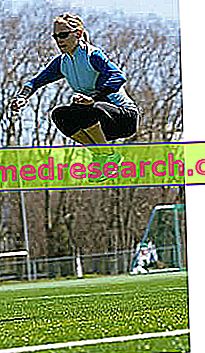By Dr. Simone Losi
It is the "prince" exercise in the gym, all of us at least once in our lives have used this magnificent exercise.
But let's see if the squat can be an exercise within everyone's reach or we need to make some considerations before offering it to our customers.

So initially testing these muscles and eventually doing a period of stretching exercises (if necessary), is useful to be able to correctly position the barbell on the shoulders and not create compensation at the lumbar level.
Once the bar is positioned correctly, you start to perform the actual exercise.
The eccentric phase of the movement occurs through the flexion of the knees and the anteversion of the pelvis, these two movements must occur simultaneously;
during knee flexion, the patella must always be aligned with the center of the foot, in the case of vare knees and / or valgus it is not possible to maintain this alignment; this advises against the performance of this exercise for those who do not have good alignment at the knee.
Furthermore, the inability to antirert and retract the pelvis will create a very significant compression at the level of the intervertebral discs.
In this case, an initial work of mobilizing the pelvis in the direction in which the block is located can subsequently help to better manage the performance of the exercise.
Another detail not less important is the ability or not to keep the heel on the ground during the "descent"; any retractions at the level of the soleus or gastrocnemius will raise the heel and even the use of a thickness under the heel will only move the problem to the level of the knee, without resolving the cause.
As you can see, the squat, despite being a fantastic exercise because it recruits so many muscles, is not without risks.
So in order not to create problems for our customers it is useful to test the mobility of the aforementioned muscles and, if necessary, to perform a sectoral stretching program for those muscles that have major retractions.
Finally, I would like to remind you that there is no perfect or better exercise, there is a person, who as such has a very precise postural and articular reality, and on this we must choose the exercise that can give the maximum benefit with the least risk.



